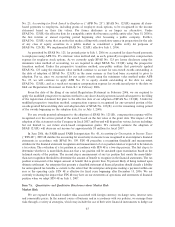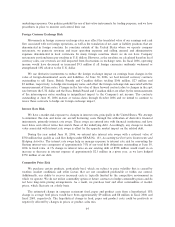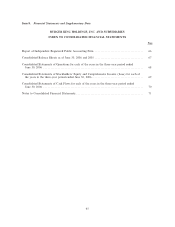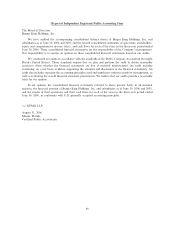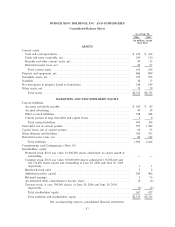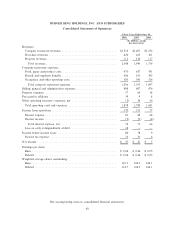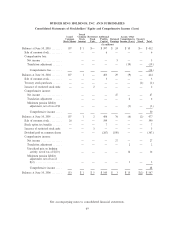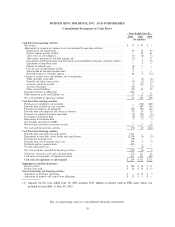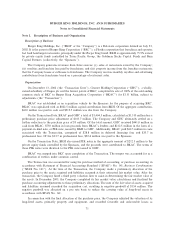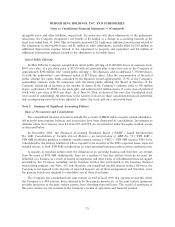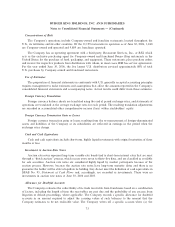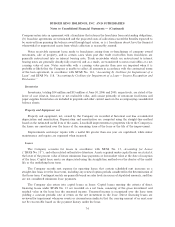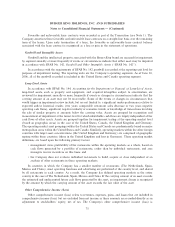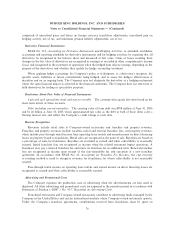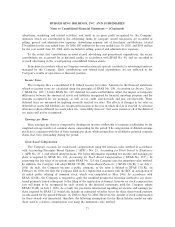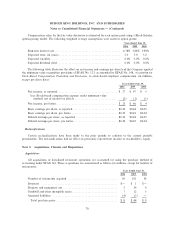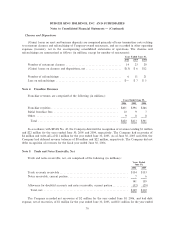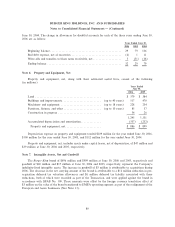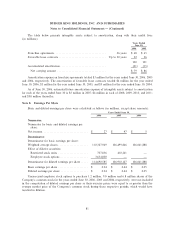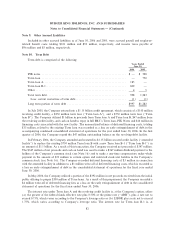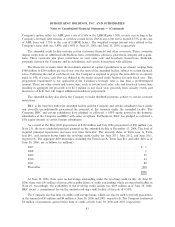Burger King 2006 Annual Report Download - page 85
Download and view the complete annual report
Please find page 85 of the 2006 Burger King annual report below. You can navigate through the pages in the report by either clicking on the pages listed below, or by using the keyword search tool below to find specific information within the annual report.BURGER KING HOLDINGS, INC. AND SUBSIDIARIES
Notes to Consolidated Financial Statements Ì (Continued)
Concentrations of Risk
The Company's operations include Company-owned and franchise restaurants located throughout the
U.S., its territories and 64 other countries. Of the 11,129 restaurants in operation as of June 30, 2006, 1,240
are Company-owned and operated and 9,889 are franchisee operated.
The Company has an operating agreement with a third party, Restaurant Services, Inc., or RSI, which
acts as the exclusive purchasing agent for Company-owned and franchised Burger King restaurants in the
United States for the purchase of food, packaging, and equipment. These restaurants place purchase orders
and receive the respective products from distributors with whom, in most cases, RSI has service agreements.
For the year ended June 30, 2006, the five largest U.S. distributors serviced approximately 88% of total
U.S. purchases by Company-owned and franchised restaurants.
Use of Estimates
The preparation of financial statements in conformity with U.S. generally accepted accounting principles
requires management to make estimates and assumptions that affect the amounts reported in the Company's
consolidated financial statements and accompanying notes. Actual results could differ from those estimates.
Foreign Currency Translation
Foreign currency balance sheets are translated using the end of period exchange rates, and statements of
operations are translated at the average exchange rates for each period. The resulting translation adjustments
are recorded in accumulated other comprehensive income (loss) within stockholders' equity.
Foreign Currency Transaction Gain or Losses
Foreign currency transaction gains or losses resulting from the re-measurement of foreign-denominated
assets and liabilities of the Company or its subsidiaries are reflected in earnings in the period when the
exchange rates change.
Cash and Cash Equivalents
Cash and cash equivalents include short-term, highly liquid investments with original maturities of three
months or less.
Investment in Auction Rate Notes
Auction rate notes represent long-term variable rate bonds tied to short-term interest rates that are reset
through a ""dutch auction'' process, which occurs every seven to thirty-five days, and are classified as available
for sale securities. Auction rate notes are considered highly liquid by market participants because of the
auction process. However, because the auction rate notes have long-term maturity dates and there is no
guarantee the holder will be able to liquidate its holding, they do not meet the definition of cash equivalents in
SFAS No. 95, Statement of Cash Flows and, accordingly, are recorded as investments. There were no
investments in auction rate notes at June 30, 2006 and 2005.
Allowance for Doubtful Accounts
The Company evaluates the collectibility of its trade receivable from franchisees based on a combination
of factors, including the length of time the receivables are past due and the probability of any success from
litigation or default proceedings, where applicable. The Company records a specific allowance for doubtful
accounts in an amount required to adjust the carrying values of such balances to the amount that the
Company estimates to be net realizable value. The Company writes off a specific account when (a) the
73


